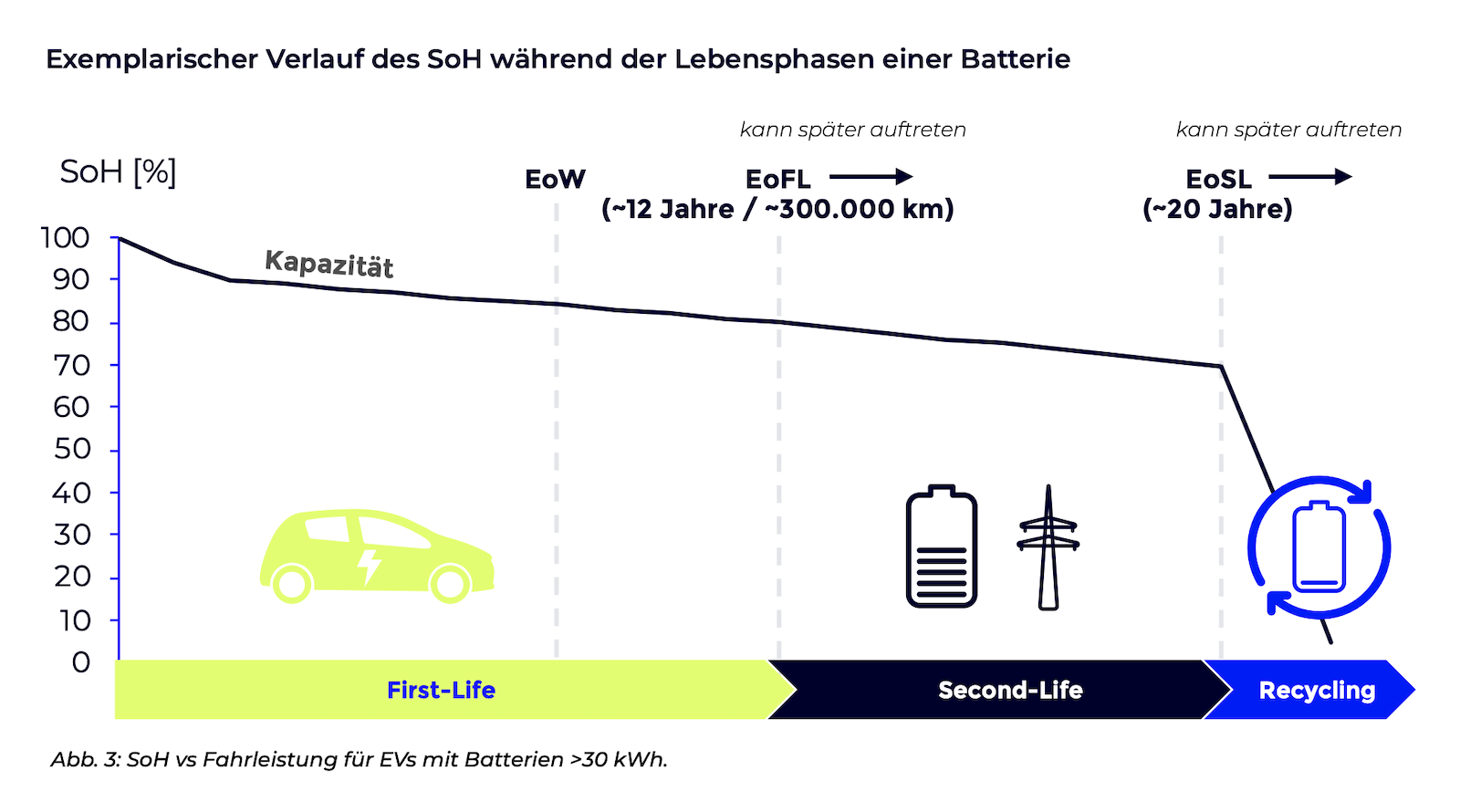
Sign up for daily news updates from CleanTechnica on email. Or follow us on Google News!
Whether it’s child labor in cobalt mining (shhh — cobalt is used in almost all electronic devices, but don’t tell anyone), range anxiety, or the collapse of the power grid if all electric cars charge at the same time, the internet is inundated with false statements and half-truths about electric cars and their batteries. As soon as one topic is refuted with facts or made obsolete by longer ranges and better charging networks, the next rumor is spread. One of these myths is that used electric cars will be nearly impossible to sell because the batteries age quickly and need to be replaced after a few years at a cost of tens of thousands of dollars.
That is a lie, those saying it know it’s a lie, but they say it anyway because Americans are so gullible these days they believe anything they see on the internet. Tim Woodward, the managing director of Prelude Ventures, which has invested in a grid-scale battery storage company that uses second-life EV batteries, says, “I don’t think anyone has [a large volume of second-life batteries] sitting there, ready to be deployed. Batteries are lasting longer in the field than anticipated. It’s not that common that you’re seeing batteries pulled out of even the earliest Teslas.”
Like so many myths, the one about battery ageing has a kernel of truth, says Electrive. The battery is the most expensive component of an electric car, which is why the legitimate question arises as to how often electric car batteries need to be replaced and what it costs to replace them. Management consultancy P3 specializes in electric mobility. It has done an extensive study designed to answer those questions and counter the myths about batteries in electric cars. It began by examining 50 EVs from its own fleet. Later, it analyzed the data from 7,000 other electric cars. “Misinformation can have a negative impact on the transition to electric mobility by fueling unfounded fears and thus reducing social acceptance and market penetration of electric vehicles. Therefore, providing reliable and transparent data is crucial to provide a realistic picture of actual battery life and thus strengthen confidence in electric vehicles,” the authors of the study said.
Electric Cars & Battery Health
The P3 study looked exclusively at the amount of degradation the batteries in electric cars experience over time and use. What is new about this study is that it is based exclusively on real data from electric cars on the road. In its earlier models, P3 focused on academic data and laboratory measurements at the cell level. The data from the electric cars adds not only external factors such as environmental influences and driving and charging behavior but also the programming of the battery management system and the ageing strategies implemented by car manufacturers.

To obtain the real-world data, P3 collaborated with Aviloo, an Austrian battery diagnostics company that had already carried out over 60,000 capacity tests on electric cars. The dataset included vehicles that had been driven more than 300,000 kilometers (nearly 200,000 miles). “This allowed the battery ageing to be assessed in more detail and more quantitatively in relation to mileage,” the authors wrote. “This specifically complements the analysis of the P3 fleet and provides a broader database for a well-founded assessment.”

The P3 analysis found that in the first 30,000 kilometers (20,000 miles), the state of health drops relatively quickly from 100 percent to around 95 percent. But degradation decreases with increasing mileage. The Aviloo data from 7,000 vehicles showed an average state of health of about 90 percent at 100,000 kilometers (60,000 miles.) After that, the trend line is almost horizontal. Between 200,000 and 300,000 kilometers (120,000 to 180,000 miles), it is almost flat and the state of health averages close to 87 percent.
There is a simple explanation for the rapid state of health loss in the initial phase, the authors explained. A so-called SEI layer (solid electrolyte interphase) forms on the anode (negative terminal) of battery cells during the first charging and discharging cycles. These are deposits of reaction products from the electrolyte that always form. Depending on the vehicle and battery chemistry, this can occur in very different ways, which is why there is a wide variation in the data. However, the trend line from the more than 7,000 vehicle datasets provides a good estimate.
Batteries Last Longer Than Expected
Another interesting finding from the more than 7,000 datasets is that the actual battery capacity is maintained longer than assumed under real-world conditions, especially with high mileages. P3 concludes that the actual user profiles and the control of the cells by the battery management system in the field significantly reduce ageing.
In the real world, some vehicles see only a small decrease in there state of health after 50,000 kilometers, while others quickly fall below 90 percent. In fact, the charging and usage behavior of drivers and the vehicles themselves influence this, as do the manufacturers. The difference between gross and net capacity — known as the buffer — plays an important role. It can be used to reduce the noticeable ageing during the warranty period by releasing a little more net capacity over time. On the other hand, the charging behavior can be adjusted via a software update to allow higher charging power, which leads to more stress in the cell. Updates can improve the control of the cells by optimizing preconditioning to reduce stress during charging under less than optimal conditions.
P3 points out two issues with its analysis. The database for vehicles with over 200,000 kilometers is significantly smaller than for vehicles with lower mileage. In addition, by definition, cars that don’t make it to 200,000 kilometers are not counted, which may make the reliability of the vehicles appear too positive. But if an electric car fails prematurely, that is not always due to the battery. “Individual cases, such as failures caused by special usage behavior or production errors, can still occur and often occur within the warranty period and therefore rarely pose a financial risk to consumers,” the authors of the P3 study wrote.
P3 Has Some Recommendations
How a vehicle is used has a big effect on how long it will last. With combustion engine cars, experience shows that stomping on the gas pedal regularly puts stress on the drivetrain, as does repeated off-road or competition usage. P3 has some suggestions on how to promote longevity for the batteries in electric cars. When not in use, batteries prefer low to medium temperatures below 25 degrees C. Temperatures over 60 degrees C are a “driving force for chemical reactions which lead to accelerated degradation of the capacity.” The charge level at which an electric car is parked over a longer period of time is also important. A higher charge level means a higher voltage in the cell — which accelerates ageing over a longer period of time. P3 recommends parking the vehicle with a low to medium charge level (ten to 50 per cent) for very long parking periods.
High-current situations that occur during DC fast charging, heavy acceleration, or driving at high speed are generally not good for battery health, especially at extreme temperatures. Gentle driving and slow charging can reduce battery ageing, the study said. The survey also shows that battery ageing rarely breaches the terms of the standard battery warranty, which is 8 years or 160,000 kilometers. The battery generally lasts much longer than the warranty or other parts of the vehicle. And P3 points out that even if a battery fails after the warranty expires, it still may have value for use in second-life battery storage situations. Only after the second use — around 20 years or more — does a battery get recycled. “At the end of the first lifetime, depending on the cost of new batteries, the battery may still have a significant residual value through a second use,” P3 said.
The Takeaway
The know-nothings who get their information from social media like nothing more than to put their ignorance on display for all the world to see by repeating the lies algorithms push their way as if they were facts. Anti-EV FUD is a favorite topic for those who find thinking too much of a chore. Studies like the one from P3 attempt to explode the myths and lies of EV opponents with something most social media users know little about — facts.
Electric cars are still in their infancy and the failures of the original batteries in early Nissan LEAFs were all the internet needed to spread rumors about short battery life. Some willfully ignorant people claimed EV owners were just driving their cars into rivers and lakes when they failed because fixing them was too expensive, and weak minded people believed that idiocy. But now we are getting feedback from real EV drivers and it shows batteries are as durable and reliable as internal combustion vehicles — maybe more so.

Chip in a few dollars a month to help support independent cleantech coverage that helps to accelerate the cleantech revolution!
Have a tip for CleanTechnica? Want to advertise? Want to suggest a guest for our CleanTech Talk podcast? Contact us here.
Sign up for our daily newsletter for 15 new cleantech stories a day. Or sign up for our weekly one if daily is too frequent.
CleanTechnica uses affiliate links. See our policy here.
CleanTechnica’s Comment Policy



